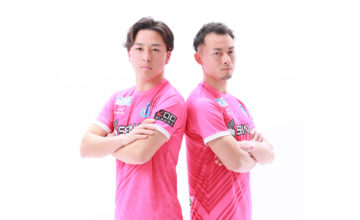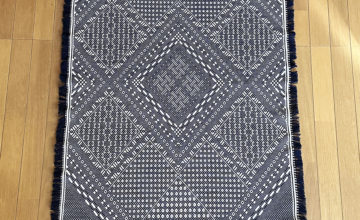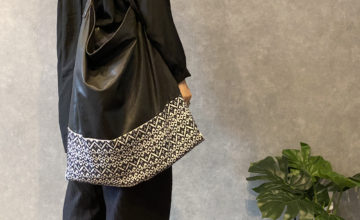Stay in Kogin -Hoshino Resort KAI Tsugaru-
2019.11.13
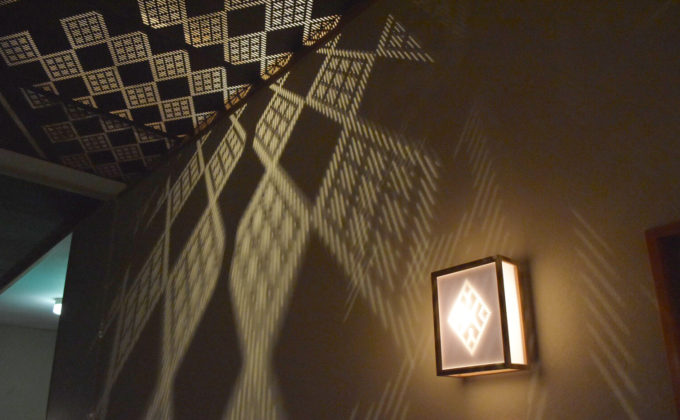
The nearest station of “Kai Tsugaru” is JR Ou Main Line Owani Onsen Station. It takes less than 1 hour by train to get to Owani Onsen from Aomori City. It is close to the border of Akita Prefecture and it is a quiet town surrounded 360-degree by mountains. It is known for its hot springs and ski resorts.
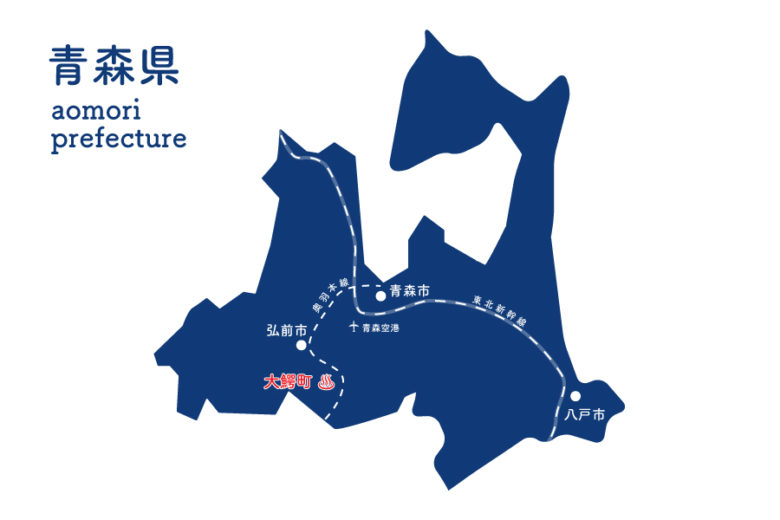
“KAI” is a hot spring inn brand developed by Hoshino Resorts nationwide. This inn is packed with the new Touji (hot spring) style, “Uruwashi gendai Touji (elegant modern hot spring)” that fits the lifestyles of modern people. It is a comfortable space with a “wa” (Japanese) atmosphere and you can experience the local culture and charm that is full of excitement. Among the “KAI” brands in Japan, “KAI Tsugaru” is the only one in the Tohoku region. It is located in Owani-town, Minami-Tsugaru county next to Hirosaki city. Here, the history of Owani Onsen (hot spring) is said to be 800 years. In the national hot spring ranking during the Edo period, it was called “Gyoji” (sumo referee) which outranked “Yokozuna” (sumo grand champion).
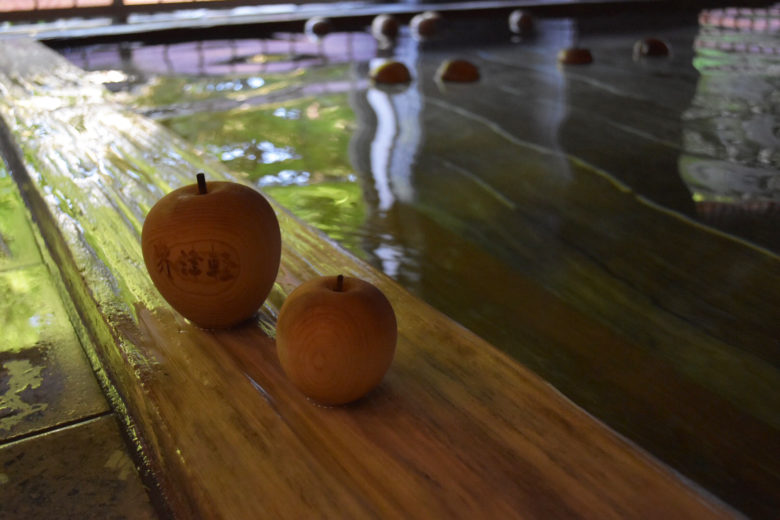
There is an apple bath with apples in “KAI Tsugaru.” During the season, the scent of apple-shaped hiba trees is refreshing.
There are “local rooms” and “local fun activities” where you can fully experience the local culture at “KAI” inns anywhere in Japan, and in “KAI Tsugaru,” you can experience “Kogin” room as a local room and “Kogin-zashi” as local fun activities.
Kogin-zashi becomes the space.
There is an impressive guest room corridor which is about 60 meters long before passing through the local rooms “Tsugaru Kogin no Ma” at “KAI Tsugaru.” Kogin patterns are shown on the ceiling through sunlight.

Kogin patterns from the ceiling was projected on the walls and floors through sunlight, and I felt a mysterious experience like being wrapped in a Kogin pattern. At night, the pattern stands out and is very fantastic.
Each guest room is named after the name of the ”Modoco” (Kogin’s pattern), and in front of the guest room, the lantern of Kogin’s pattern is shining.
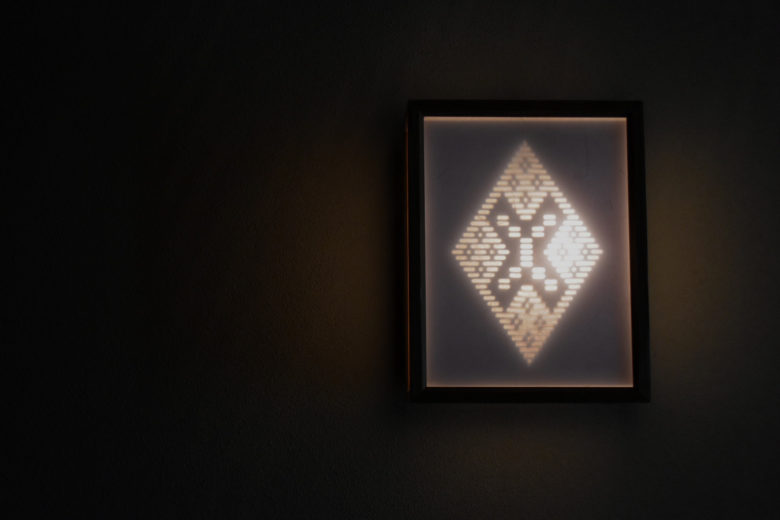
“Modoco” is a rhombus motif that is the basis of the pattern of Kogin-zashi. In Kai Tsugaru, all 40 rooms’ “Modoco” are different.
I walked through the corridor of Kogin through the sunbeams, and first I saw the room “Tsugaru Kogin.” A sukiya-style house is rare in a snowy country.

An object with a motif of Kogin-zashi in a delicate and traditional space of a “sukiya” is displayed. I felt a fresh impression about “sukiya” in combination with the fresh green of the garden. In May when I interviewed, the cherry blossoms were over and the fresh greens and the flowers were dazzling.

The paper sliding door that leads to the open-air bath is bold and very powerful with Kogin’s pattern transparent on the entire surface. An indigo dye with “Modoco” was decorated in alcove.
Regardless, the other rooms are Japanese or Western style, the Kogin patterns produced a stylish room without any discomfort.

The Western-style room has a monotone Kogin’s pattern on the wall and “Modoco” were projected on the ceiling with lights. There is a mysterious charm that cannot be thought of as a Japanese culture. I felt like European modern interior style.
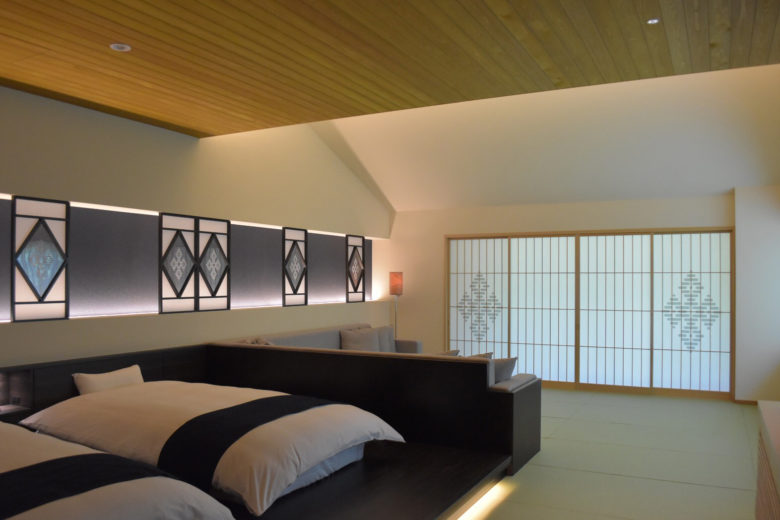
The name of this spacious Japanese-Western room is “Hana Tsunagi no Ma.”
The paper sliding door and interior panels are decorated with the “Modoco” which is its name of room. The outside fresh green dyed the paper sliding door in green, and it was very beautiful.

An object that expresses the mechanism of Kogin-zashi in three dimensions will show you the charm of Kogin-zashi, not just embroider the fabric.

The bathhouse was decorated with a Kogin’s pattern.
The bathtub was made of 2000-year-old ancient cypress and there are apple shaped floats made of hiba trees with a good scent. The fresh green outside the window was a refreshing and very pleasant bath. It was a Kogin’s pattern framing the scenery of this large window. It is very beautiful with a light pattern on white. Although it can be seen in the fresh green scenery, the winter snow scene seems to be wonderful. I want to see the winter too.
There are other places in the hall that can’t be overlooked.
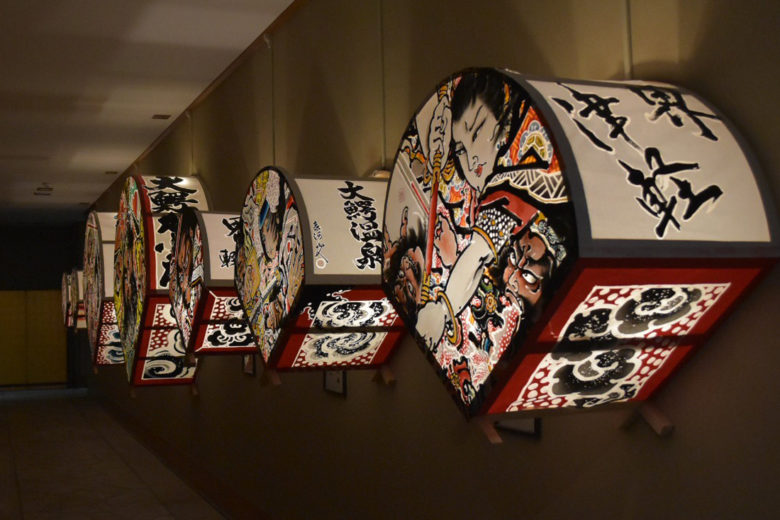
Small “Neputa,” lined up in the corridor leading to the bathhouse, is a work made by Neputa painters only for KAI Tsugaru. Although it is a small size, it has the power of seeing the real thing of the summer “Neputa” Festival.
Tsugaru’s Four Seasons Water Garden, which connects the guest room and the front lobby, is spacious and comfortable. The Tsugaru glass light that can only be enjoyed this season was very romantic.

The setting of this water garden changes in the spring, summer, autumn and winter. In winter, a “kamakura”(huts made by snow) is set up in this water garden, and it is colored with a lantern with Kogin’s pattern. It seems that you can relax with a “kotatsu”(Japanese foot warmer) in the “kamakura”. It looks fun in winter too!
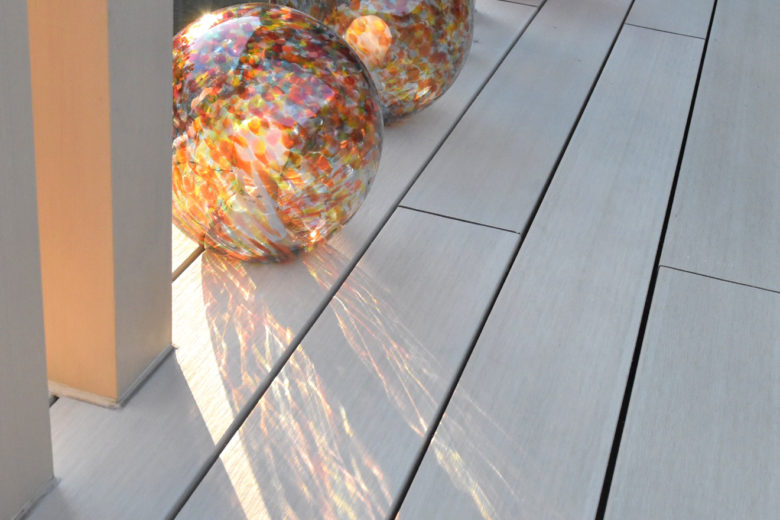
This color of Tsugaru glass seems to be a color inspired by the summer season of Tsugaru “Neputa.” The shadow of the glass reflecting the sunset was very beautiful.
Various fun of Kogin
At KAI Tsugaru, you can experience the Tsugaru Shamisen and Kogin-zashi as the “local fun.” These two experiences are acquired by KAI Tsugaru staff themselves and provided to guests, but Kogin-zashi is planned by the “Kogin Lab” team, which is equipped with the best members of KAI Tsugaru staff. You are offered the pleasure of Kogin-zashi in various forms.
The “memorable Kogin” is a paper bookmark that can be easily enjoyed by those who have no experience with Kogin-zashi. You can choose your favorite color from the naming unique to Aomori.

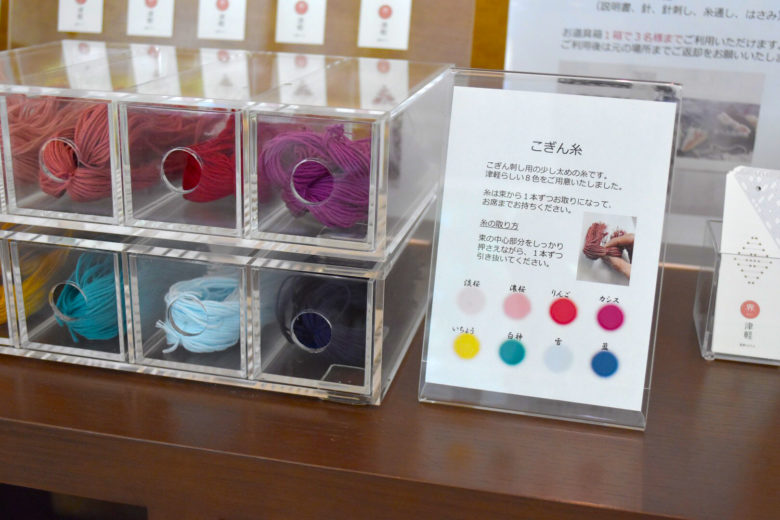
The thread names used for paper bookmarks such as apples, cherry blossoms, and Shirakami are fun to choose from.
If it gets a little interesting, you can also try “all you can do Kogin-zashi” in your room. There are also a set of actual materials and books on how to do Kogin-zashi, so you can focus on working Kogin-zashi. The contents of this kit change according to the season. This kit shown in the picture was the fresh green color of May.
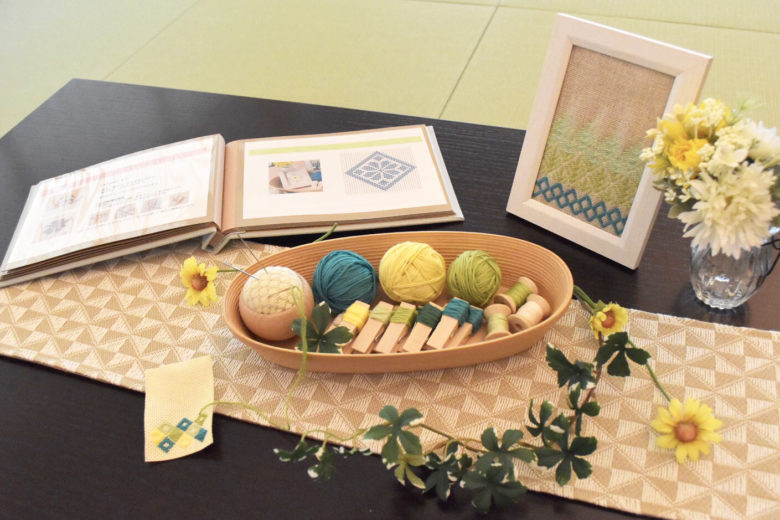
If you want to thoroughly enjoy Kogin-zashi, there are workshops where you can get direct guidance from the local Kogin-zashi artists. Reservation is required, but while listening to professional guidance, you can listen to the local story of Kogin-zashi and deepen your Kogin-zashi knowledge. At the time of the interview, Ms. Hirota, a member of Kogin Lab, taught us specially the fragrance bag made with Kogin-zashi.

I made an apple pattern scented bag. You can choose from several patterns, but Aomori is well known for an apple. The apple pattern was the first challenge, but I feel better when the round shape is completed little by little.
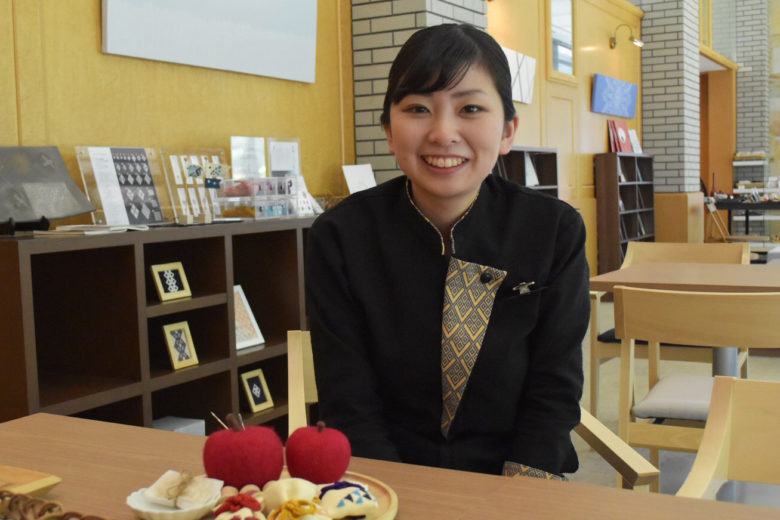
Everyone at the Kogin Lab is passionate and dedicated about Kogin. The story of Kogin was very exciting. They said that they would like to convey the fun of not only embroidering the historical embroidery born from local life in a modern and fun way.
Why Kogin?
In Tsugaru, there are also other crafts such as beech and Tsugaru coating. The location of Owani-town, near the prefectural border with Akita, is close to the Shirakami Mountains and has abundant natural resources. In the first place, why did they pay attention to the Kogin-zashi among the many local resources? Kogin-zashi is a traditional craft, unlike traditional crafts, but it is also a folk art born from the poor daily life of farmers. I was very curious about how they decided to incorporate it into an inn that offers high-grade services.
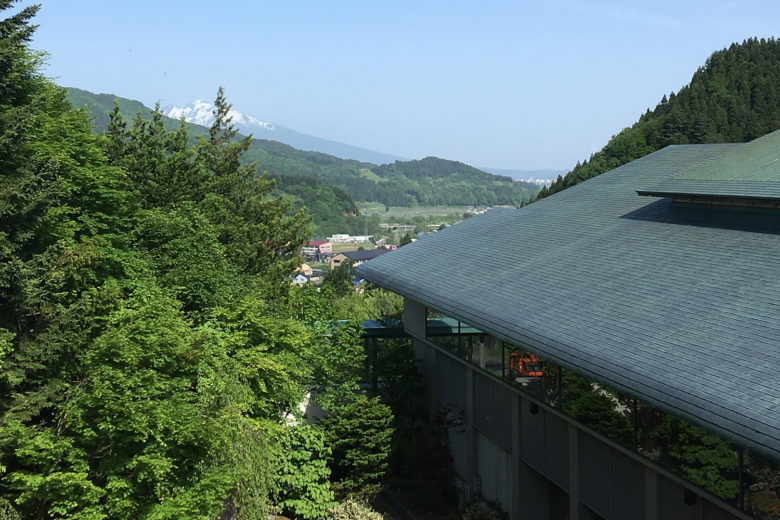
The view was the best, and Mount Iwaki, called Tsugaru Fuji, was seen across the mountain.
“We felt that the traditional indigo and white shades of Kogin-zashi were chic, and We could provide a sophisticated and calm Japanese space for customers coming to KAI Tsugaru. And above all, I think meeting Mr. Yamahata had a huge impact on us.”
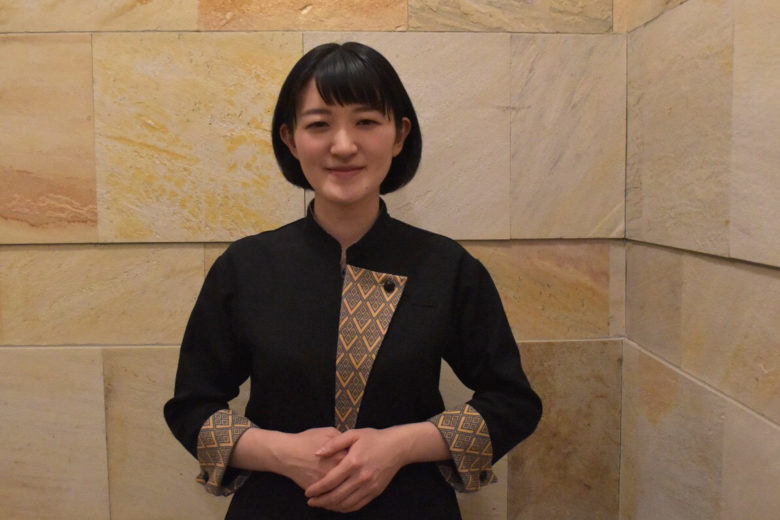
KAI Tsugaru staff’s uniforms have a kogin pattern on the sleeves and chest.
Ms. Saito from KAI Tsugaru told me. KAI Tsugaru has been promoting the “Tsugaru Kogin Project” since 2013 in collaboration with Kogin designer Mr. Iemasa Yamahata.
“I feel that the width of the development of Kogin-zashi at the inn has been greatly expanded by being able to express not only embroidering but also various ways using the design.”
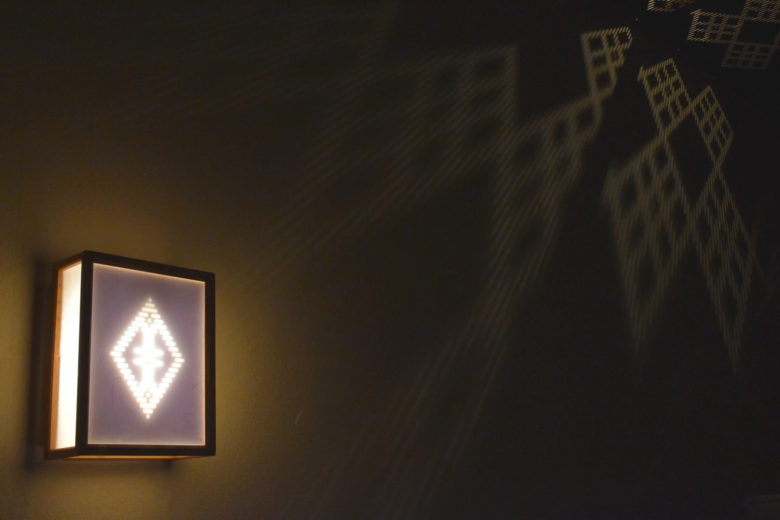
Looking back on the day I spent in KAI Tsugaru, I noticed that the attractive points of Kogin-zashi are scattered both visually and in communication with users. If you can see the moving design like Kogin, the sunbeams, you will be able to talk with the emotions without knowing anything. Kogin-zashi is said to be the beginning of Tsugaru and embroidered so as to close the cloth of the kimono to overcome the cold in winter. I realized that Kogin-zashi is a traditional culture with simple and easy-to-understand stories.
It may be easy to gain empathy and excitement because it is a beauty that was born from the practical use of the people’s lives.
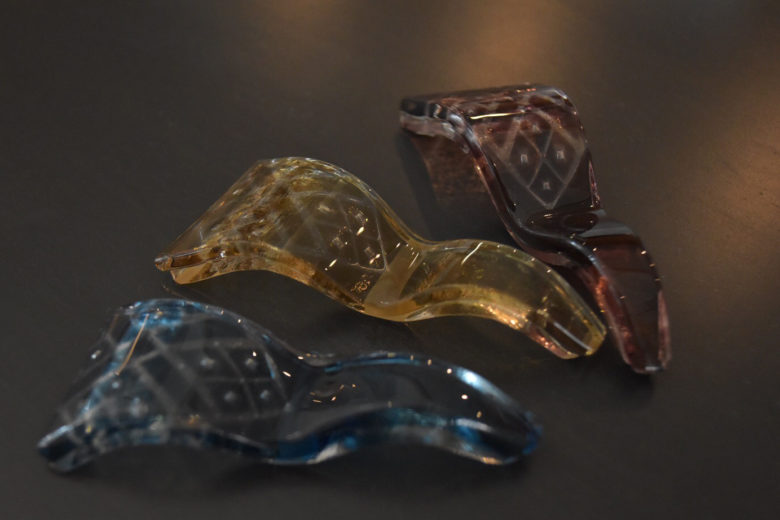
The shop in the hall had nice local crafts. This Shirakami Glass chopstick rest has a beautiful Kogin’s pattern.
I can see the fun of Kogin, not just the needlework that I work with my hands. The feverishness that I have always felt from the stories of everyone in KAI Tsugaru can be seen as an interesting and new development of Kogin-zashi because I knew the potential of the culture of Kogin-zashi through the making of inns. In the future, KAI Tsugaru will continue to provide time to enjoy the full Tsugaru culture from Kogin-zashi. I’m looking forward to seeing how you can see the charm of Kogin that we haven’t experienced yet.
I’ve exhausted the story of Kogin, but KAI Tsugaru can fully enjoy the culture of Tsugaru. In the experience of Tsugaru Shamisen, I was impressed by a master who taught me the difference from Okinawa Sanshin, and the delicious food that was indispensable for my trip was more than I wanted to talk about. It is a point that you want to stop by when you travel to Aomori.
About Hoshino Resort KAI Tsugaru
One of Japan’s first hot spring inn brands “KAI,” which Hoshino Resorts operates at 15 locations nationwide. It is located in Owani-town, Minami-Tsugaru county, about 10 minutes by train from Hirosaki city. This is an inn where you can fully enjoy Tsugaru’s nature and culture, as well as the historical hot springs.
https://www.hoshinoresorts.com/en/resortsandhotels/kai/tsugaru.html


